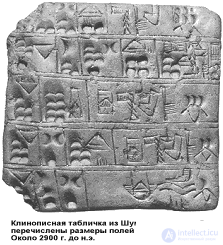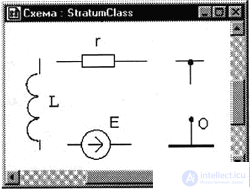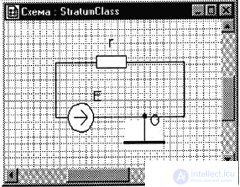Lecture
Man linguizes his world, lives in a world that is being re-created with the help of his own language. The central places in his world are designated by proper names. The boundaries of the language - the boundaries of the world. We can understand, know and accomplish only what is inherent in the language.
The relation of signs to objects is semantics. The ratio of signs to signs is syntax. The attitude of signs to people is pragmatist.
The relation of signs to objects is semantics. The ratio of signs to signs is syntax. The attitude of signs to people is pragmatist.
Language reflects our thoughts, it is like thinking. Thinking is like the world around it. Hence, we can conclude that the language is likened to the real world. If two languages are like a certain system, then they are similar to each other. That is why it is possible to translate from one language to another.
Differences in languages are related to the needs of the people who use them. For example, the northern peoples have dozens of words denoting snow in different qualities. These nations are vital differences, the nuances of this concept. In Russian, there are no such nuances, since there is no such need. When translating, one term will unfold into an explanation, paragraph, lyrical digression, or the definition of "x is y, associated somehow with z". If we don’t know what a metro is, then we’ll be told in detail that "a metro is an underground electric railway."

Differences in languages are related to the needs of the people who use them. For example, the northern peoples have dozens of words denoting snow in different qualities. These nations are vital differences, the nuances of this concept. In Russian, there are no such nuances, since there is no such need. When translating, one term will unfold into an explanation, paragraph, lyrical digression, or the definition of "x is y, associated somehow with z". If we don’t know what a metro is, then we’ll be told in detail that "a metro is an underground electric railway."
The need to convey, share information creates concepts in the language. Frequent use of a certain concept leads to the folding of the definition, the explanation of the term. A person has a poorly developed sense of smell, respectively, there are no special terms, names of smells. We say "it smells like:". But colors have their own names (green, red, blue), we use these concepts more often in life. Some Polynesian peoples do not have the time detail, because they have nowhere to hurry. The needs of the people grow the language. The development of the language shows the development of the individual. If you remove the possibility of communication from a person, then thinking ability will die away, nerve cells die away, connections between them. The structures of the language, which are not used by society, also die.
In language, the Law of economy of language means. This is one of the basic laws of linguistics. Look at how the same word trouble, depending on the position in the sentence or the ligaments between the words, changes its function in the English phrase. Don't trouble troubles until trouble troubles you / Do not wake famously while it is quiet.
Another example. In English, the ending -ing is inherent in the seven parts of speech and how it will be read depends on the environment.
Reading - reading;
Is reading - absorbed by reading;
Like reading - likes to read;
Like her reading - how you read;
Her having read is how you read it.
In the development of a language, design processes are constantly taking place, on the one hand, and simplifying constructions, on the other. Language in the course of development is trying to introduce a maximum of concepts and acquire maximum flexibility, but it takes care of minimizing the amount of money spent on it. There are the following areas of development:  the emergence of new concepts;
the emergence of new concepts;  simplified pronunciation;
simplified pronunciation;  simplified pronunciation;
simplified pronunciation;
An example is that the shell dies off in English, it is replaced with well, since the future can be passed more simply, a number of cases have died out in Russian, the letter "Yat", professional and household jargon goes into the language standard ("Click on the attachment and attach the dock file" , "nishtyak" means very much).
If you hit an unfamiliar object (boiler room, confectionery shop, and so on), the terms change, but still we are able to understand that something can be opened, closed and this will lead to some consequences. Thinking understands more than specific objects, is able to operate with something else, sometimes without knowing them. Therefore, there is a meta mechanism in the language. "Gizmo", "fucking" replace in the language a lot of specific unknown things.
And another important note, with the development of the brain, thinking, language is becoming more and more metalanguage. Abstractions are very difficult to describe (be convinced of this, having given the definition of the words “object”, “connection”, “by”). But the law of minimization of language means such development provides.
Languages are divided into written and oral. Written, in turn, can be divided into sound-letter (30-40-50 characters); hieroglyphic (2000-20000 characters); pictures (the number of characters is infinitely large). The language of electrical circuits is pictorial, but has a limited number of characters (about 140). The language environment can use several languages at once, for example, Stratum: consider an example from electrical engineering (Fig. 13.2).
 fig.13.2 |  fig.13.3 |
The resistance model is:
fi1- fi2 = r * i
u: = ~ fil - ~ fi2
? fi1, fi2, i
The model of the voltage source is:
fi2-fi1 = e - r * i
? fil, fi2, i
The current node model is:
il + i2 + i3 = O
? il, i2, i3
The model of the grounding has the form:
fi = 0? fi
The inductance model is:
il: = i
L * (i - ~ il) = (fi1 - fi2) * dt
? fi1, fi2
u: = ~ fil - ~ fi2
Capacity model has the form:
du / dt = i / c
fil - fi2 = ~ u
? fil, fi2, i

fig.13.4
Electrical circuit with experiment control interface
From the resulting images, you can collect various schemes - the simplest circuit (Fig. 13.3), serial, parallel connection (Fig. 3), any types of combined connections. The figures presented a number of options. Symbols (lines) are represented by image links. Now you can attach service images to the scheme - windows, controllers, oscilloscopes. Due to such an organization, it is possible to study graphically the dependence of the current or voltage of a branch on the resistance value (Fig. 13.4).
Fig. 3 is a message. It has a complete meaning. Fig.13.2 represents the alphabet of the language. As you can see, the language is specific - the characters are not written in a line, but use a two-dimensional field of writing the message. At the same time, there are common properties of languages. If someone writes a phrase in such a language, then the other will be able to understand its meaning, the message contains meaning, you can build new phrases from the elements of the alphabet, there are laws for creating phrases (schemes), the phrase interprets (describes) a thought (object), represents its properties.
The message can itself be interpreted if placed in the language environment. Interpreted, that is, to realize the properties of objects referred to in the text.
Please note that this is how children learn to understand the language of their parents. But not at all the way a foreign language is taught - a dictionary, a grammar textbook. No child has ever been given a cradle dictionary. Unfortunately, therefore, methods of teaching foreign languages are generally not correct, and therefore do not give results.
The second circumstance. What is the purpose of learning a language? According to most philologists, to write and speak correctly. But do not you understand "zhyly - were", if you write with the letter "s"? But the main efforts are devoted to the study of the rules of the type “LIFE, THIS, write with the letter I”. With that, we can not, in principle, explain why LISHI must be written with the letter I.
The main goal of the language is understanding between nations, people, organisms, machines.
The language has a complex structure. But at the same time, he has an undoubted logic, which is comparable to mathematical logic. Moreover, you can build a mathematical model of the language. Each language has its own tools, patterns. For example, Russian is 6 cases and three times, and English is 6 times, 2 cases. The logic is hierarchical, on different structures of the language - its own laws.
| Sound | Phonetics | Unit of perception |
| Morpheme | Morphology | The smallest unit of meaning in the language. Unit of value |
| Word | Vocabulary | Unit name It highlights the subject in the world and is the identifier of this subject. The emphasis separates one word from another verbally; in writing, punctuation marks and spaces are used. |
| Phrase | Grammar | A unit for defining grammatical laws. The phrase consists of word forms. |
| Sentence | The unit of expression of thought. This is something that you can always say yes or no to. For thought is important attitude - positive or negative. The center of the sentence is the verb. Verb - the relationship between words (concepts). | |
| Text | A unit of knowledge of names and understanding of information. |
Let us follow the example of the logic of formation of language forms.
Arm
Hand oh
Hands-on
Hands
It is clear that the "hands" - not changeable part of a single language object. Continuing
Leg
Foot-oh
Foot-y
Feet
It is clear that the "legs" is the unmodifiable part of another object of the language. It is also clear that the "-a", "-th", "-s" is common in word formation and expresses the relationship between words. What is the logical conclusion of considering these language units?
1. The same grammatical part must exist in the same meaning with other lexical parts (roots).
2. The same lexical part should be traced in other words with other grammatical parts (endings, suffixes, prefixes).
Now, using these conclusions, you can analyze with other words.
Examples of patterns at other levels of the language: there is more information in consonants than in vowels. "SMLT" is clearly understood as "airplane", and in the letters "aooe" you will not recognize the word "regularity". The sound combination "mr" is easily pronounced and is present in the words (darkness), and "mb + p" can only be on a word break ("eight times").
Task 1. Spend a grammatical and lexical analysis of the sentence "Glosya kuzdrya budlanula bokra and clumping over the box."
Often the logic is simplified. There are wrong classes, exceptions. Later it creates a jumble of language. For example, the words "first, fifth, fortieth, thousand, million" are often referred to as numerals. Although logically this is not true.
The first, fifth, and fortieth are adjectives (which one?), Because they vary in gender, number, and case, as all adjectives do. Thousand, million - nouns (what?), Since they change only in numbers and cases, as all nouns do.
Task 2. Determine the part of the speech of the words "three" and "dozen" - three people, a dozen of cows.
Neither is a pronoun a part of speech, as many think. "Some" is an adjective, "how many" is a numeral, "so" is an adverb, "you" is a noun.
Task 3. Grammatical classes of words. It can be assumed that two words belong to the same grammatical class if they can vary according to the same grammatical categories (examples of grammatical categories are case, number, time, etc.).
Break into grammatical classes the following words: camel, who, who, fox, man, someone, fifth, five, blue, three, four . For each class, specify the grammatical categories for which the words are included in it.
Solution of task 3. First you need to find those grammatical categories by which at least one word from the above list can be changed.
(1) The death case. According to the cases, all the given words are changed, except one.
(2) Number. Some words vary in numbers, others (numerals two, three, four, five, pronouns someone, someone, and also a noun man ) - no.
(3) Rod. White, fox, fifth, which, and also two change (by comparison: two sons and two daughters ); the rest of the words do not change in the genera (this is true for words such as five , which have no genus at all, and for such as the table , which have a well-defined, fixed gender).
(4) Animation. In this grammatical category, the white, the fox, and the fifth change (compare: I see the fifth youth and see the fifth house ; here, the fifth and fifth are accusative cases of the singular masculine; these forms differ only in animation and inanimateness), and also two, three, four (compare: I see two sons and see two tables ). The remaining words do not change (compare what was said above about the genus).
(5) Degrees of comparison. According to them, only the word white changes .
(6) The juxtaposition of complete and short forms. It is represented only by the word white.
Thus, the above words are divided into seven grammar classes.
| Class | Grammatical categories by which words of this class change | ||||||
| room | Composition | Death case | Number | Rod | Animation | Degree of comparison | Counter setting full and short forms |
| (one) (2) (3) (four) (five) (6) (7) | white fox, fifth, who, son table two three four five who man one | + + + + + + - | + + + - - - - | + + - + - - - | + + - + + - - | + - - - - - - | + - - - - - - |
Task 4. Determine animate and inanimate objects - a man, a dead man, a people, a crowd, a snowman, an oak tree, a kitchen, a doll, a kite, a queen, humanity. Find a formal rule for determining the presence of the sign "soul" in the subject.
Not in words! And in the connection of words. An example of this is the following text (although not a single word is initially unknown, but after reading the meaning becomes obvious):
Syrup Kalush with Kalush katusha. And uvarila butyvku and will:
- Kalushata, Kalushatki! Butyava!
Kalushata zaypalis and butyavku strung. And podduonilis.A Kalush willed:
- About her! About her! Butyavka something nekuzyavaya!
Kalushat Butyvka learned. Butyavka rattled, snitched up and poured from the gun. And Kalush will get Kalush:
- Do not bother with booties, damned booties and zyumo-zyumo non-bouncers. From butterflies dudonitsya.
And the booty will come after the gun:
- Kalushata podduonilis! Kalushata podduonilis! Zyumo nekuzyavye! Tuski bety!
We should not think that everything is very simple, the example below shows that there may be discrepancies in the message. But the longer the text in an unfamiliar language, the more unambiguous becomes its meaning for us. As there are more and more combinations between words, more redundancy, a clearer purpose of words, and therefore meaning. Just the word "syapala" will be out of the text, out of touch with other words, incomprehensible. In the text, its meaning is revealed.
Bynkaya Marko smoked a durcha (A) and for a needle with a fat hand in a tune (B).
Options for "decoding" sentences
BUT:  The patient angrily scolded the doctor.
The patient angrily scolded the doctor.  The patient was offended sweating grumbling.
The patient was offended sweating grumbling.  Swallowing milk, lost weight nag.
Swallowing milk, lost weight nag.
B:  and hit the ball in the physiognomy.
and hit the ball in the physiognomy.  and slid sideways into the waiting room.
and slid sideways into the waiting room.  and waved in the evening to the village.
and waved in the evening to the village.
Comments
To leave a comment
Artificial Intelligence
Terms: Artificial Intelligence